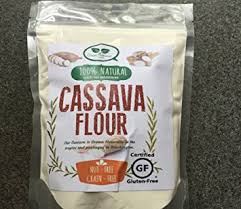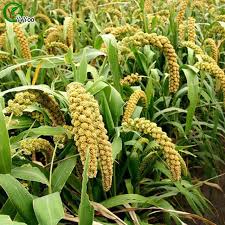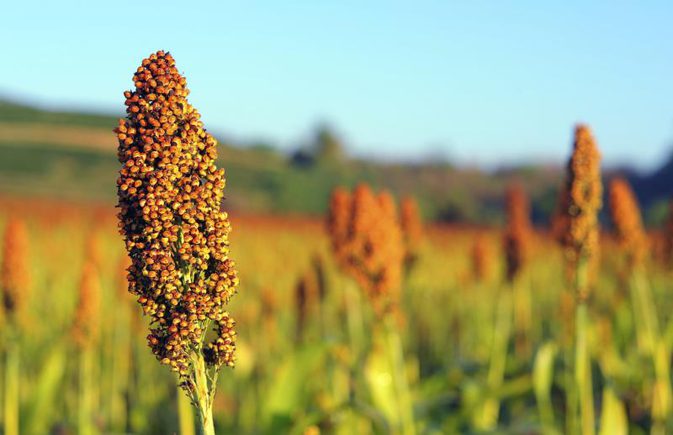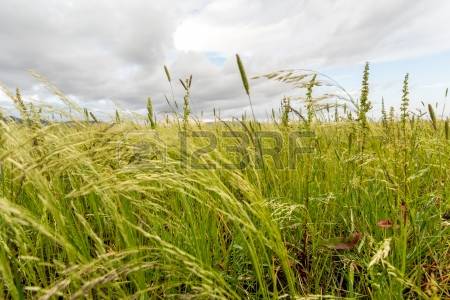Wheat today is not the same as many decades ago and today’s wheat was probably the first GMO food. Although it is regarded as a staple food along with rice there are many health issues where the culprit appears to be wheat based. Intolerance to wheat products seems to be on the increase and many people are seeking alternatives. Gluten, which is derived from wheat, barley and oats appears to be affecting more and more people world wide and even when wheat products are advertised as gluten free there are concerns, as in many cases the gluten is replaced with sugar to give back some taste to the wheat flour. There are many healthier alternatives to wheat as this article shows and although some are not readily available in many shops they can be found without too much difficulty.
Amaranth
Amaranth is a good source of both carbohydrates and fibre. A 1-cup serving of the cooked grain contains 46 grams of carbohydrates and 5 grams of fibre. The fibre in the amaranth can also help with weight control as it increases satiety and helps control hunger. Eating more than 14 grams of fibre a day can help you decrease your daily calorie intake by 10 per cent, according to an article in the journal “Nutrition Review.” For better health, women should aim for 25 grams of fibre a day, while men should get 38 grams. For those over 50, the daily need for fibre is 21 grams for women, and 30 grams for men. One cup of cooked amaranth contains 9 grams of protein. Unlike other grains, amaranth is a complete source of protein, which means it contains all of the essential amino acids — just as meats and poultry do. Protein in foods like amaranth is necessary to help your body build and maintain the proteins found in your cells, muscles and organs
As a whole grain, the amaranth retains its germ, which is a source of
healthy unsaturated fats, including the monounsaturated and
polyunsaturated fats. A 1-cup serving of cooked amaranth contains 4
grams of total fat. Replacing your saturated fat foods, such as red meat
and butter, with foods rich in unsaturated fats like those found in
amaranth might help lower cholesterol levels.
Amaranth is a good source of a number of essential vitamins and minerals
that you need for good health, including B vitamins, calcium, iron and
zinc. The B vitamins help your body turn the food you eat into energy,
as well as make blood cells. As a good source of calcium, amaranth helps
keep your bones and teeth healthy and strong. The iron in the grain
assists with the transportation of oxygen throughout your body, and the
zinc helps your body heal cuts.
Breadfruit Flour
According to a study from the University of British Columbia, breadfruit contains “a full spectrum of the essential amino acids and are especially rich in phenylalanine, leucine, isoleucine and valine. Another nutrient group important to disease prevention are antioxidants. Found in a wide variety of foods, antioxidants prevent and reverse oxidative stress, the damage caused by free radicals to body functions. Free radicals, in addition to being a natural by- product of food consumption can be introduced into the body through over exposure to sunlight, chemicals found in the environment and various other sources, but a diet full of high powered antioxidants can slow and even reverse the damage caused by free radicals.
One research study in the spring of 2016 focused specifically on the antioxidant activity of breadfruit as it relates to the toxicity of cadmium, a common environmental toxin and endocrine disruptor. This particular study investigated the effect of cadmium on alterations in sperm count and activity and found that the tested methanol extract of breadfruit caused significant improvement in sperm count, motility (movement) and hormone levels. Vitamin C is an important antioxidant found in breadfruit. Individuals who eat diets rich in fruits and vegetables containing a lot of vitamin C have a decreased risk of heart disease, stroke and cancer, as well as an extended life span compared to those who do not have a high dietary intake of vitamin C
Due in part to its antioxidant content, in addition to other factors,
breadfruit is also great for your heart. It’s been found to contain
phytochemicals (chemicals from plants) that protect the heart against
atherosclerosis, a heart disease characterized by slowly building
pockets of white blood cells in artery walls causing them to thicken.
Eventually, atherosclerosis can lead to a blockage of the blood supply
to the heart resulting in a heart attack. In 2006, breadfruit was termed
as a good prospect to use in medicinal protection against this very
common disease. Another way it’s beneficial to your heart is by its
ability to combat high cholesterol. Breadfruit is also incredibly high
in fibre, offering nearly half the daily recommended intake in just one
serving. A high fibre diet is associated with a reduced risk of high
blood pressure, (hypertension) and other diseases associated with the
heart..
Breadfruit also contains a fairly large quantity of thiamine, aka
vitamin B1. Thiamine helps maintain muscle tone along the walls of the
digestive tract, where the majority of the immune system is located. It
also assists in the secretion of hydrochloric acid, helping your body
fully digest food and absorb the highest amount of nutrients possible.
Together, these features make thiamine a valuable nutrient in
maintaining a healthy immune system.
Because breadfruit has some incredible anti-inflammatory
and antioxidant properties, it has been researched as a potential
cancer fighting food. A Taiwan study found it to have significant
potential in the fight against skin cancer and an extract from this
fruit, applied directly to the skin, decreased the number, size and
malignancy of skin tumours. Another cancer that may be fought by the
powerful nutrients in breadfruit is pancreatic cancer. Pancreatic cancer
operates differently from many other types of cancer because it is not
as susceptible to “nutrient starvation” as other cancers often are. This
means that the cancer drugs that are commonly prescribed to starve
cancer cells of nutrients are even less effective than usual against
cancer of the pancreas.
Therefore, when studying possible treatments for pancreatic cancer,
scientists must focus on things that can kill these cancer cells and
prevent them from pulling nutrients from nearby vessels and cells. In
2014, a pilot study investigating the impact of an extract from the
leaves of the breadfruit tree found that the chemical compound had 100
per cent “preferential cytoxicity” against human pancreatic cancer cells
known as PANC-1 under nutrient-deprived conditions. This means that the
extract successfully killed 100 per cent of the pancreatic cancer cells
when subjected to a nutrient-deprived environment, which normally would
have little to no effect on these cells.
Another study in Asia published in the American Journal of Chinese
Medicine studied the effect of an extract from the breadfruit plant on
liver cancer cells. The findings were also fascinating, as researchers
discovered that the extract did not cause traditional apoptosis
(programmed cell death) that’s often seen in anticancer nutrients and
pharmaceuticals. Instead, when exposed to the breadfruit extract, the
liver cancer cells underwent autophagic death. This alternative method
of cell death occurs naturally in the body as it processes proteins and
breaks down damaged cells and is a more effective method of stopping
cancer in certain cases.
For the purposes of cooking or stewing, mature but unripe fruits are
preferred. As breadfruit continues to ripen after picked, you can choose
when to eat it at its ripest, which is when it gives to thumb pressure.
This fruit should never be refrigerated because it can undergo chilling
injury at temperatures below 12 Fahrenheit.
Many fans of breadfruit know that it can be used in a huge variety of
ways. You can eat it ripe, which may give a taste similar to custard
apples. It may also be stewed, fried, baked, broiled or powdered.
Generally, you should peel the outer skin, then split the fruit into
quarter slices before discarding the central core, after which you can
cut it into the appropriate size for whatever dish you plant to prepare.
When baked, the taste is more closely related to freshly baked bread
(which is how it earned its name).
Breadfruit has incredible potential in many areas, including the creation of a much better-tasting gluten free flour than many other food products.
Cassava Flour
Similar to those mentioned above cassava flour is gluten free. People with celiac disease can readily consume starch or flour from cassava because of this. So they can still enjoy bread or cake made from cassava flour or other savoury dishes which may need flour to thicken the gravy.
The fibre in cassava flour slows down the process of absorption of sugar into the bloodstream thus reducing the spike that would occur from the ingestion of simple carbohydrates. Good news for those suffering from diabetes. Cassava contains some antioxidants which play very important roles in reducing the risk of cancer. These include vitamin C, beta carotene and saponins. These antioxidants are known to help protect your cells from damage by free radicals and repair broken DNA. A study by scientists from Tianjin University found that saponins, which are derived from by plants, may help prevent cancer. Potassium plays a very important role in the reduction of blood pressure and the regulation of heart rate and cassava is very high in this mineral.
Chickpea Flour
Anyone who has gone on a diet knows that hunger pangs can weaken even the strongest willpower. The challenge is to lower your caloric intake without starving yourself. Enter chickpeas. 1 cup contains just 269 calories, but half your daily value of fibre and 30% of your protein, both of which monitor the insulin that causes your body to store fat. So eat a cup of chickpeas for lunch and you will feel full until dinner. That’s why one study found that participants who snacked on chickpeas reported greater levels of satisfaction and ate less snack food in-between meals.
Just 2 cups of chickpeas contain your entire daily value of dietary fibre. Better yet, they are full of both soluble and insoluble fibre, the latter of which helps lower LDL cholesterol. One study even found that chickpeas lowered cholesterol levels even more than other foods with comparable levels of fibre. Fibre helps keep your digestive system working. It is the part of plants that do not dissolve. That’s why doctors suggest 40% of your diet come from fibre-rich foods, which definitely includes chickpeas. Unfortunately, more and more people struggle with type 2 diabetes. If you are one of the millions of people across the world who need to regulate blood sugar, incorporate legumes like chickpeas into your diet. Doctors recommend starchy legumes and vegetables for their phytochemicals and fibre. Chickpeas digest slowly without spiking blood sugar and lower haemoglobin A1C levels. The protein in chickpeas also helps with nervous system health. Protein amino acids affect neurotransmitters in the brain and help them function properly.
Chickpeas are an important source of selenium, a mineral that supports liver enzyme function and detoxifies cancer-causing compounds from the body. Selenium is also very important for good prostate health. Chickpeas are also a source of folate, which helps in formation of cancer preventing cells in the body.
Coconut Flour
Coconut flour’s biggest attraction is its gluten-free status, meaning it
contains none of the gluten protein molecules found in grains such as
wheat, rye and barley. Gluten is highly allergenic and can even be
deadly for people with Celiac disease (a condition where gluten damages
the lining of the small intestine and prevents it from absorbing
nutrients in food). However, growing evidence – particularly that
compiled by Dr. William Davis in his 2011 book, Wheat Belly – suggests
that gluten is unhealthy for everyone, and is a leading cause of
lethargy, bloating, brain fog and more. Fortunately, gluten-free diets
are becoming much easier to adopt thanks to the growing availability of
gluten-free flours like coconut flour and others mentioned in this
article.
A study published in the December 2006 suggests that adding coconut flour to your diets can significantly reduce your risk of developing heart disease, lower your cholesterol levels and guard you from cancer and diabetes. The researchers, based in the Food and Nutrition Research Institute in the Philippines, claim that these benefits stem from coconut flour’s unusually high levels of dietary fibre, almost, double that of wheat bran.
Since it is derived from the flesh of the coconut, coconut flour retains a large number of the fats for which coconuts are so beloved by health enthusiasts. A 100 gram serving of coconut flour contains 8.7 grams of fat, of which 8 grams are saturated. Most of these fats are medium-chain triglycerides (MCTs) – essential protective fats with noted anti-viral, anti-microbial and anti-fungal, anti-bacterial and anti-inflammatory properties. MCTs have also been shown to boost the metabolism, making coconut flour suitable for weight loss diets. Because it is high in fibre yet relatively low in digestible carbohydrates compared to processed flours, coconut flour has a gentle impact on blood sugar levels. This makes it an excellent flour for diabetics, pre-diabetics and anyone else who wants to avoid blood sugar spikes.
Though it is free from gluten proteins, coconut flour contains an impressive number of other proteins. In fact, 100 grams of coconut flour contain 19.3 grams of protein or 38 per cent of our RDI (recommended daily intake) far more protein per serving than other leading flours such as wheat, cornmeal or rye. Consequently, coconut flour is a valuable cooking ingredient for vegan or vegetarian. One downside of coconut flour is that on its own it does not bind and needs the addition of some other flour such as millet, cassava, barley, teff or eggs. Coconut flour also absorbs copious amounts of oil or water.
Fonio
Fonio is one of the preeminent African super foods and holds an honoured
place in West African, and particularly Sahel, culture. Nutritionally,
it rivals the Ethiopian grain teff. There are two types, white and black
but both are actually a type of millet. White fonio is grown in the
Sahel area that borders the Sahara Desert, and it does well in dry and
grassy savannah as well as in richer climates. Black fonio is found in
Benin, Niger, Nigeria and Togo and is less common and more nutritious.
Although fonio is found all over West Africa, it is especially prized in
the Fouta Djallon region of Guinea and Senegal and the Akposso region
of Togo and Central Nigeria.
The fonio plant is fast-growing and can mature from seed to harvest in only 6-8 weeks. It doesn’t need a lot or water or rich soil, which makes it a good crop for soil-depleted and dry land areas that border the Sahel. After they are mature, fonio’s tiny grains must be dried and removed from their husk before they are ready to cook. Before machines did this, the fonio was de-husked with a mortar and pestle, where the grains were pounded. Fonio could also be slowly toasted in a large pan until it popped out of its husk, and then pounded to separate the grain from its covering. Fonio is becoming increasingly popular as a gluten free, nutritious grain that can be used in cooking and baking. It has been an important crop in some parts of Africa because it is highly nutritious, it grows very quickly and it can be grown on land where other cereal crops won’t grow. Even though fonio is highly nutritious and is now gaining a reputation as a superfood, up until recently, it had been very difficult to mass produce because, the grain is so small it was too difficult to remove the husk. Now, however, modern technology has found a way, and the grain that is known as “The Hungry Rice” is now far more readily available. Fonio has more nutritional value than most other grains and is rich in calcium, magnesium and zinc. Here are ten.
The essential amino acids that fonio contains, especially cystine and methionine, help to detoxify the liver and the body. They help the liver to function properly and remove unwanted toxins from the bloodstream. Early studies have suggested that eating fonio could help prevent liver disease and colon cancer. Fonio is often recommended in Africa as a food for pregnant women. It has a high concentration of iron, so it helps to stop anaemia developing, and it also contains folic acid and other amino acids that are beneficial for women during pregnancy.
Fonio has a beloved place on West African plates. It is so full of protein that it even has amino acids that other grains don’t, making it a much more complete protein source. Fonio is rich in iron, calcium, magnesium, zinc and manganese, and has more of these nutrients, serving-per-serving, than other grains It is also very high in fibre, which makes it a good carbohydrate as it releases its sugar slowly into the blood stream, making for consistent, high energy over a longer period of time.
Green Banana Flour
Because the young bananas are picked before they ripen, their sugar content never fully develops, so they’re lower in natural sugars than when they are ripe. Also, unlike other starchy ingredients such as pasta and white bread – which are rapidly digested, get absorbed as glucose into the bloodstream, and spike up insulin levels – the resistant starch in green bananas slows the release of food through the gut. This slows the insulin response and prevents that sugar spike and consequent sugar crash. Resistant starch is not just any fibre, but prebiotic fibre. Prebiotics support the good bacteria present in the gut, bowel, and colon and are far more powerful and beneficial for our bellies than probiotics as they act as a fertilizer for existing good flora, helping them to grow and work more effectively. This can help with everything from poor digestion to IBS, and it can even help you get a flatter stomach.
Lower in calories than most wheat flours and alternatives like oat and almond flour, it’s an excellent choice for those watching their waistlines. Because of its fibre content, it keeps you feeling fuller for longer, making you less likely to reach for that packet of biscuits an hour after lunch. It is also great for those suffering with diabetes for this very reason. High in essential minerals and vitamins including zinc, vitamin E, magnesium, and manganese, green-banana flour is also abundant in potassium – so much so that just two tablespoons contain the same amount as seven whole bananas! It also helps lower cholesterol, boosts heart health, and aids nerve and muscle activity. So if you’re gluten-intolerant, hooray! Green-banana flour is also grain-free, dairy-free, nut-free, and soy-free, making it perfect for vegans.
Millet
Millet is quite similar to wheat when it comes to the structure of its protein. The one glaring exception is that millet is a non -gluten grain. Wheat contains copious amount of this hard to digest plant protein. When plain millet flour is used for baking bread the resulting loaf is light, white, and quite similar in texture to wheat bread. As a result, people who wish to avoid gluten tend to immediately gravitate to millet bread as the most logical and palatable substitute.
While millet may not contain gluten, it does contain goitrogens.
Goitrogens are substances in food that suppress thyroid activity and can
lead to goiter, an enlargement of this very important gland which
resides in the throat. Low iodine intake can also lead to goitre.
Hypothyroidism, is a serious and sometimes debilitating condition that accompanies a weak, under active or enlarged thyroid such
as what occurs with goiter. Depression, difficulty losing weight, loss
of hair, cold hands/feet, and fatigue are common hypothyroid symptoms.
While the goitrogens in foods that contain them are usually reduced by
cooking (such as cruciferous vegetables), cooking actually increases the
goitrogenic effect of millet! Therefore, when folks begin eating large
amounts of millet bread with a wholesale switch over from wheat, the
goitrogenic effects of this simple dietary change can be profound. So go
easy on the millet.
Despite this side effect millet has many health benefits. It is one of the few grains that alkalize the body. It also hydrates the colon, decreases triglycerides, is low on the glycaemic index and contains magnesium, is a pre-biotic (food for good gut bacteria) and contains serotonin which contributes to your “feel good” mood.
Sorghum/guinea corn
Because it’s gluten-free, sorghum grains offer a safe alternative to wheat if you follow a gluten-free diet. One nutritional highlight of guinea corn is its mineral content. A 1/4 cup serving contains 13 milligrams of calcium, 2.1 milligrams of iron, 138 milligrams of phosphorus and 168 milligrams of potassium. Calcium and phosphorus are essential minerals needed for bone health and strength. Adequate intakes of iron support the transportation of oxygen in your body, and help promote cell growth and development.
Potassium helps maintain fluid balance, and high intakes improve blood pressure. Guinea corn contains about the same and sometimes more protein than many other grains. However, the protein is not as readily absorbed because each protein in the grain is surrounded by a tough protein wall that requires more time to digest. About 46 per cent of the protein in the guinea corn is absorbed. Sorghum/guinea corn is full of fibre, vitamin B6, magnesium and manganese. It lowers cholesterol, is good for diabetics and according to the University of Missouri it can inhibit the growth of cancerous tumours. It is also said to prevent blood platelets from clumping together by containing a compound called policosanol.
Teff
Teff, which is grown in Ethiopia and used to make injera, the sourdough flatbread, is a small grain with a long list of health benefits. Teff is a gluten-free grain so it can be a great alternative for those living with celiac disease or crohn’s disease, having gluten intolerance or choosing a gluten-free lifestyle.
Along with being gluten-free, high in iron and super tasty, teff has also recently been recognized as a new super-food and in some cases is referred to as the new quinoa. Teff is also known to help with weight reduction and assists with PMS. It is also ideal for vegetarians looking for sources of non-dairy protein. But one thing to bear in mind is that this super grain is not cheap. Teff is high in protein with a great combination of eight essential amino acids needed for the body’s growth and repair. It has high amounts of calcium, manganese, phosphorous, iron, copper, aluminum, barium, thiamin, and vitamin C, which is not normally found in grains. The iron from teff is easily absorbed and is also recommended for people with low blood iron levels.
If you are diabetic, you might want to consider adding teff to your diet to control blood sugar levels. Teff contains approximately 20 to 40 per cent resistant starches and has a relatively low glycemic index that can help diabetics better regulate their sugar levels. The fibre content in this tiny little grain can help you regulate your bowel movements and keep you feeling fuller longer. Naturally, this grain is very low in saturated fat.
Because it is low in sodiumTeff is also great for those seeking to lower their blood pressure and maintain a heart healthy diet. Unprocessed teff is a better alternative compared with pre-processed, cooked teff which often comes with preservatives or additives that are high in sodium. If you’re worried, always double check nutritional labels. Part of eating a nutritionally adequate diet is being able to incorporate superfoods like teff into all of your meals. Teff is a versatile grain and can be eaten whole, steamed, boiled or baked. Nowadays, teff is found in a variety of products like pancakes, breads, cereals, snack bars and many other foods. Traditionally, it is used to make Ethiopian injera (sourdough bread). Looking very much like poppy seeds, teff has a nutty, grainy taste and texture that can add dimension to your recipes and cooking. Most Ethiopian platters are served on injera bread.
Quinoa Flour
Quinoa, pronounced “keen wah” is one of the world’s most popular
health foods. It is gluten-free, high in protein and one of the few
plant foods that contain all nine essential amino acids. It is also high
in fibre, magnesium, B-vitamins, iron, potassium, calcium, phosphorus,
vitamin E and various antioxidants. The Incas referred to it as the
“mother of all grains” and believed it to be sacred.
These days, you can find quinoa and products made with it all over the
world, especially in health food stores and restaurants that emphasize
natural food. It is non-GMO, gluten free and is usually grown
organically. Technically, quinoa is not a grain but is generally
regarded as such. It is high in fibre. One study that looked at 4
varieties of quinoa found a range of between 10 and 16 grams of fibre,
per every 100 grams. This equals 17-27 grams per cup, which is very
high, more than twice as high as most grains. Boiled quinoa contains
much less fibre gram for gram, because it absorbs so much water. Most of
the fibre is insoluble fibre, which brings different health benefits to
the body from soluble fibre.
The health effects of real foods go way beyond the vitamins and minerals we’re all familiar with. There are thousands of trace nutrients in there, some of which are extremely healthy. This includes interesting molecules called flavonoids, which are plant antioxidants that have been shown to have all sorts of beneficial effects on health. Two flavonoids that have been particularly well studied are quercetin and kaempferol, and they happen to be found in large amounts in quinoa. In fact, the quercetin content of quinoa is even higher than typical high-quercetin foods like cranberries.These important molecules have been shown to have anti-inflammatory, anti-viral, anti-cancer and anti-depressant effects in animal studies. There are numerous studies showing that soluble fibre can help reduce blood sugar levels, lower cholesterol, increase fullness and help with weight loss. Quinoa is much higher in fibre than most grains, with one source finding 17-27 grams of fibre per cup. Studies have shown that by using quinoa instead of typical gluten-free ingredients like refined tapioca, potato, corn and rice flour, it can dramatically increase the nutrient and antioxidant value of the diet.
Protein is made out of amino acids. Some of them are termed “essential” because we cannot produce them and need to get them from the diet. If a food contains all the essential amino acids, it is seen as a “complete” protein.The problem is that many plant foods are deficient in certain essential amino acids, such as lysine.However, quinoa is an exception to this, because it contains all the essential amino acids. For this reason, it is an excellent source of protein. It has both more and better protein than most grains. With 8 grams of quality protein per cup, quinoa is an excellent plant-based protein source for vegetarians and vegans.
The glycaemic index is a measure of how quickly foods raise blood sugar levels. It is known that eating foods that are high on the glycaemic index can stimulate hunger and contribute to obesity Such foods have also been linked to many of the chronic, Western diseases that are so common today, like type 2 diabetes and heart disease. Quinoa has a glycaemic index of 53, which is considered low. However, it’s important to keep in mind that it is still pretty high in carbs, so it is not a good choice for a low carbohydrate diet. There are many nutrients in the modern diet that people tend to be lacking in. This is particularly true of some minerals, especially magnesium, potassium, zinc and (for women) iron. Interestingly, quinoa is very high in all 4 minerals. It is particularly high in magnesium with one cup having about 30% of the RDA. The problem is that it also contains a substance called phytic acid, which can bind these minerals and reduce their absorption. However, by soaking and/or sprouting the quinoa before cooking it, you can reduce the phytic acid content and make these minerals more bioavailable. Quinoa is also pretty high in oxalates, which reduce the absorption of calcium and can cause problems for certain individuals with recurring kidney stones.
A human study found that using quinoa instead of typical gluten-free breads and pastas significantly reduced blood sugar, insulin and triglyceride levels. A study on rats found that adding quinoa to a diet high in fructose almost completely inhibited the negative effects of fructose. Quinoa also happens to be very high in antioxidants which neutralize free radicals and help fight aging and many diseases. Allowing the seeds to sprout seems to increase the antioxidant content even further In order to lose weight we need to take in fewer calories than we burn. It is known that certain properties of foods can facilitate this process, either by boosting metabolism (increasing calories out) or reducing appetite (lowering calories in). Quinoa has several such properties. The last one is not a health benefit, but still incredibly important. It is also tasty and goes well with many foods. Depending on the type of quinoa, it can be important to rinse it with water in order to get rid of saponins, which are found on the outer layer and can have a bitter flavour. It should now have absorbed most of the water and gotten a fluffy look. If done right, it should have a mild, nutty flavour and a satisfying crunch.
Now that you know what a wide alternative choice there is to wheat flour, you can try some of them to find out which ones best suit your needs by way of taste and health benefits. You may have to shop around a bit or even go on line to get some of them but your health is worth it, isn’t it?
Disclaimer: The contents of this website are not intended to replace a one to one relationship with your health practitioner nor are they meant as medical advice. You are encouraged to do your own research and make your own decisions in partnership with your medical practitioner. This entry was posted in Well being and tagged carbohydrates, fibre, flour, gluten, protein, vitamins, weight loss. Bookmark the permalink. Edit← Meditation is the KeyWater Water Everywhere →
-
Archives
- January 2020
- December 2019
- June 2019
- January 2019
- December 2018
- August 2018
- July 2018
- February 2018
- October 2017
- August 2017
- July 2017
- May 2017
- April 2017
- March 2017
- February 2017
- January 2017
- November 2016
- October 2016
- August 2016
- July 2016
- June 2016
- May 2016
- April 2016
- March 2016
- February 2016
- January 2016
- December 2015
- November 2015
- October 2015
- August 2015
- July 2015
- June 2015
- May 2015
- April 2015
- March 2015
- February 2015
- January 2015
- December 2014
- November 2014
- October 2014
- September 2014
- Meta









